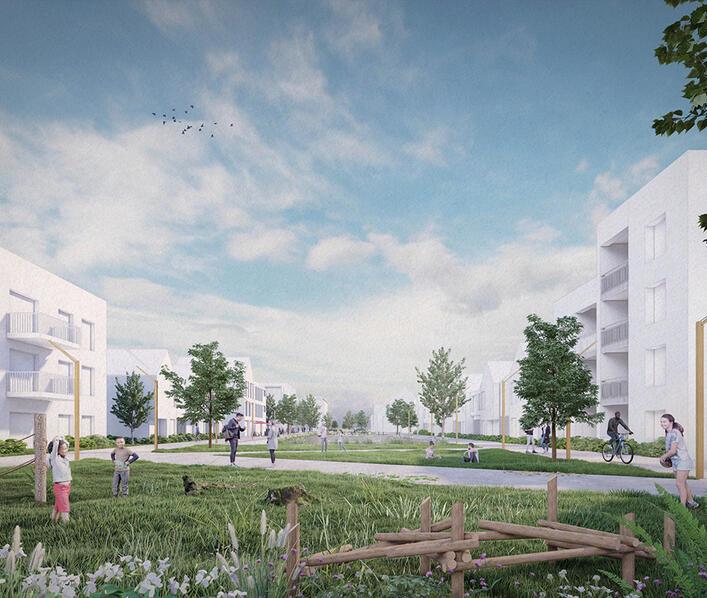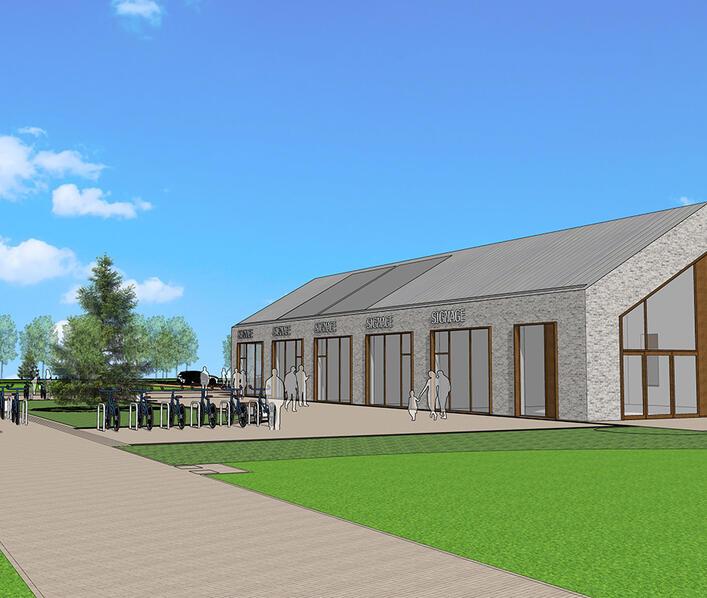Memorial to the 19 of the 95th
- 31.05.2013

A memorial plaque in honour of 19 United States Army Air Force air and ground crew of the 95th Bomb Group who lost their lives 70 years ago at Alconbury Airfield was dedicated today (Monday 27 May).
The event commemorated the day when, 70 years before, at around 8.30 in the evening, USAAF ground personnel were arming B-17 Flying Fortress bombers and, inexplicably, a 500 pound bomb detonated. The explosion set off several other bombs and, in an instant, 19 men were killed and 21 injured. Four B-17 bombers on the ground were completely destroyed and eleven others damaged.
The memorial was bought about through a collaboration between the owners and developers of the site – Urban&Civic – and the Airfield Research Group, who are working with them to capture the historic use of the former airfield during the Second World War and Cold War.
Rebecca Britton, from Urban&Civic said:
“When we were working through the history of the airfield, we came across a small reference to this incident, which we think is the biggest single loss of life on the airfield throughout its history. We discussed it with the Airfield Research Group who have done an amazing job in carrying out additional research which enabled us to pull together pictures, eye-witness accounts, and crucially the names of the men killed. From there, it just felt the right thing to have a memorial to mark the incident.”
Paul Francis of the Airfield Research Group said:
“It is not always easy to find out more information about events that happened 70 years ago, but through perseverance the team were able to account for all the 19 crew killed in the incident and this is really the only place where their sacrifice is marked. It is particularly poignant in that the role and sacrifice of groundcrew is often overlooked, yet many were away from home for longer than pilots and aircrew and faced dangers from the explosives they worked with as well as from direct bombing raids.”
Colonel Brian Kelly, Commander 501st Combat Support Wing of the US Air Force attended the event, along with a USAF Guard of Honor. He added:
“What struck me most about this incident was that the 95th Bombardment Group had only been on base for just a few days, and it must have been devastating for all of those involved, and for families back in the States. As we also mark 70 years of the USAF coming to Europe to join the war effort, it was very moving to be a part of acknowledging this loss, and knowing that our British allies will carry on remembering the sacrifices both countries made in the name of freedom.”
Eyewitnesses from the time reported seeing an engine from the exploding bomber fly through the air, punch through another B-17 and finally come to rest wedged beneath a third parked over 600 feet away. Off-duty airmen from the unit enjoying an outing to the cinema in Huntingdon heard and felt the explosion, rushed out of the cinema to find a truck and drove at speed back to the base to help their comrades.
Paul Bellamy of the Airfield Research Group said:
"Not only have we been able to create a lasting memorial to those who lost their lives in this tragic accident, but more importantly we have been able to rediscover the identities of all of them, as many of their names had been lost over the intervening years. The next step will be to track down the original investigation report, which appears to have been unable to fully explain the cause, although the various rumours from the time were still being passed on by USAF ground crews at Alconbury well into the 1990s".
James Mutton of the 95th Bomb Group Heritage Association said:
"As Chairman of the 95th Bomb Group Heritage Association based at Horham, Suffolk, and as a Board Director of the 95th Bomb Group Memorials Foundation in the United States, on behalf of both organisations I wish to express our sincere gratitude to Rebecca Britton of Urban&Civic, Paul Bellamy, Paul Francis and Richard Flagg of the Airfield Research Group for their efforts in the dedication of this magnificent memorial dedicated with full military honours to the 19 young men who lost their lives at Alconbury 70 years ago. After this explosion the 95th were redeployed to Suffolk , flying missions from Framlingham prior to their permanent base at Horham in June 15th 1943. The Heritage Association in the UK, in conjunction with the Memorial Foundation in the US, both volunteer organisations, work side by side to honour the 617 Fallen Brothers of 95th with a dedicated museum at the Red Feather Club, a totally restored NCO club on the former base at Horham."
RAF Alconbury played a central part in military operations across Europe in WW2 and for many years after during the period of the Cold War. It was an operational airbase from 1938 through to the mid 1990s, with the last flight taking off in February 1995. The owners of the site, Urban&Civic, are now using the collective expertise of the Airfield Research Group to develop a full archive of the airfield which will ensure that this history is both recorded and promoted. Whilst the former airfield will be transformed into the Alconbury Enterprise Campus and the new communities of Alconbury Weald its heritage will be woven into the fabric of the place for future generations via a dedicated heritage area around the listed buildings, public archive and integration of historic features.
The dedication ceremony was also attended by Revd Andrew Milton, representatives of the 95th Bombardment Group, 303rd Bombardment Group, 401st Bombardment Group, 482nd Bombardment Group, 1st Air Division Headquarters Historical Society, 8th Air Force Historical Society and by representatives of the local Stukeleys’ Parish Council and heritage group.






